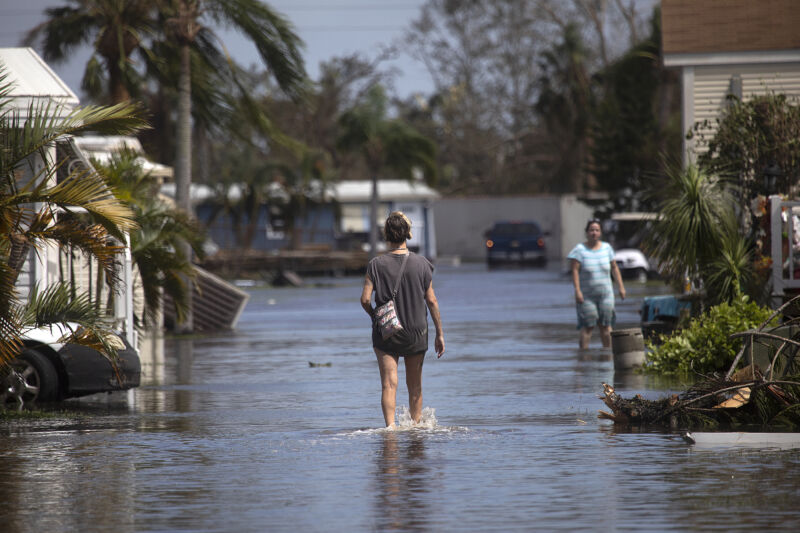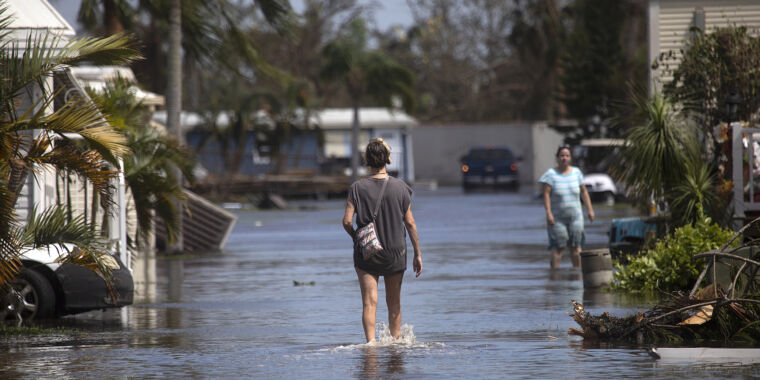
In the devastating aftermath of Hurricane Ian, some of Florida’s worst-hit areas face a new threat: a spate of flesh-eating bacterial infections that can spread into sewage-contaminated floodwaters.
In the weeks since the natural disaster, authorities in Florida’s Lee County, which is located around Fort Myers, have seen an increase in potentially life-threatening Vibrio vulnificus infections. The bacteria are known to lurk in warm coastal waters, but fester amid pollution, especially spillage of sewage.
This year, Lee County counted 29 infections – 27 identified in the aftermath of the hurricane – as well as four deaths. By comparison, Lee County recorded only five cases and one death in 2021 and zero cases in 2020. Florida has recorded a total of 65 cases and 11 deaths in 2022, including those from Lee County. The state total is almost double the totals of the past two years.
“The Florida Department of Health in Lee County notes an abnormal increase in cases of Vibrio vulnificus infections due to exposure to the floodwaters and standing water after Hurricane Ian,” a spokesman for the Lee County health department told CBS News Monday. exposing open wounds, cuts or scratches to the skin to warm, brackish or salt water.”
The good news is that the infection is not known to pass from person to person. But those exposed to flooding are at risk of infection from a wound or broken skin. People can also get sick from eating raw or undercooked seafood harvested from bacteria-contaminated water.
In infected wounds, symptoms begin with redness, swelling, and pain that can quickly progress to full-body infection, leading to horrific bloody skin lesions (called hemorrhagic bullae) and septic shock.
According to the Centers for Disease Control and Prevention, V. vulnificus infections are fatal in about 40 percent of total cases, although wound infections have a lower death rate of about 20 percent. Aggressive surgical treatments, including amputation, to remove infected, decaying tissue, can prevent death. Those most at risk are people with compromised immune systems and for foodborne infections, those with chronic liver disease. In addition to surgery for tissue infections, treatment includes combinations of antibiotics.

